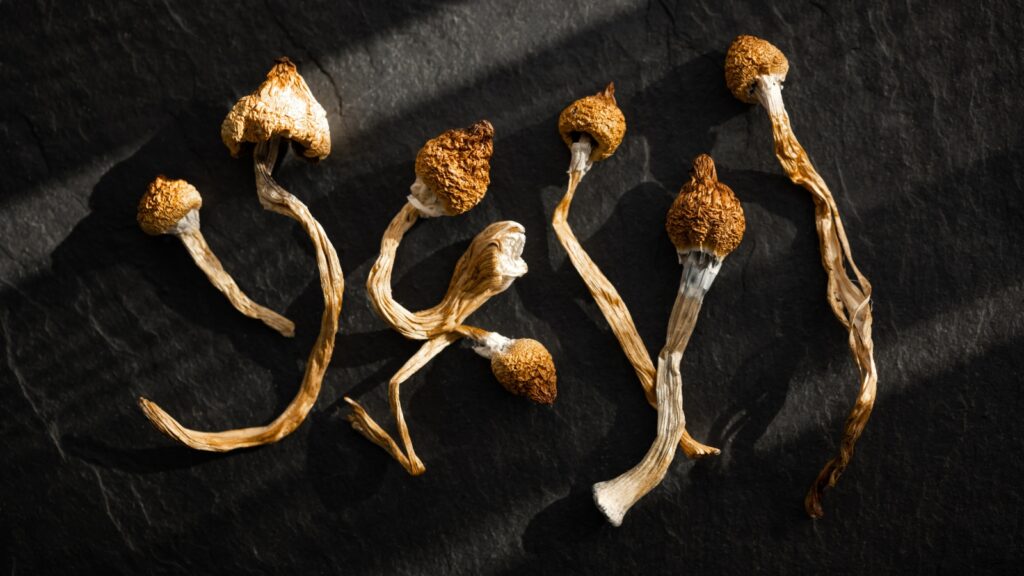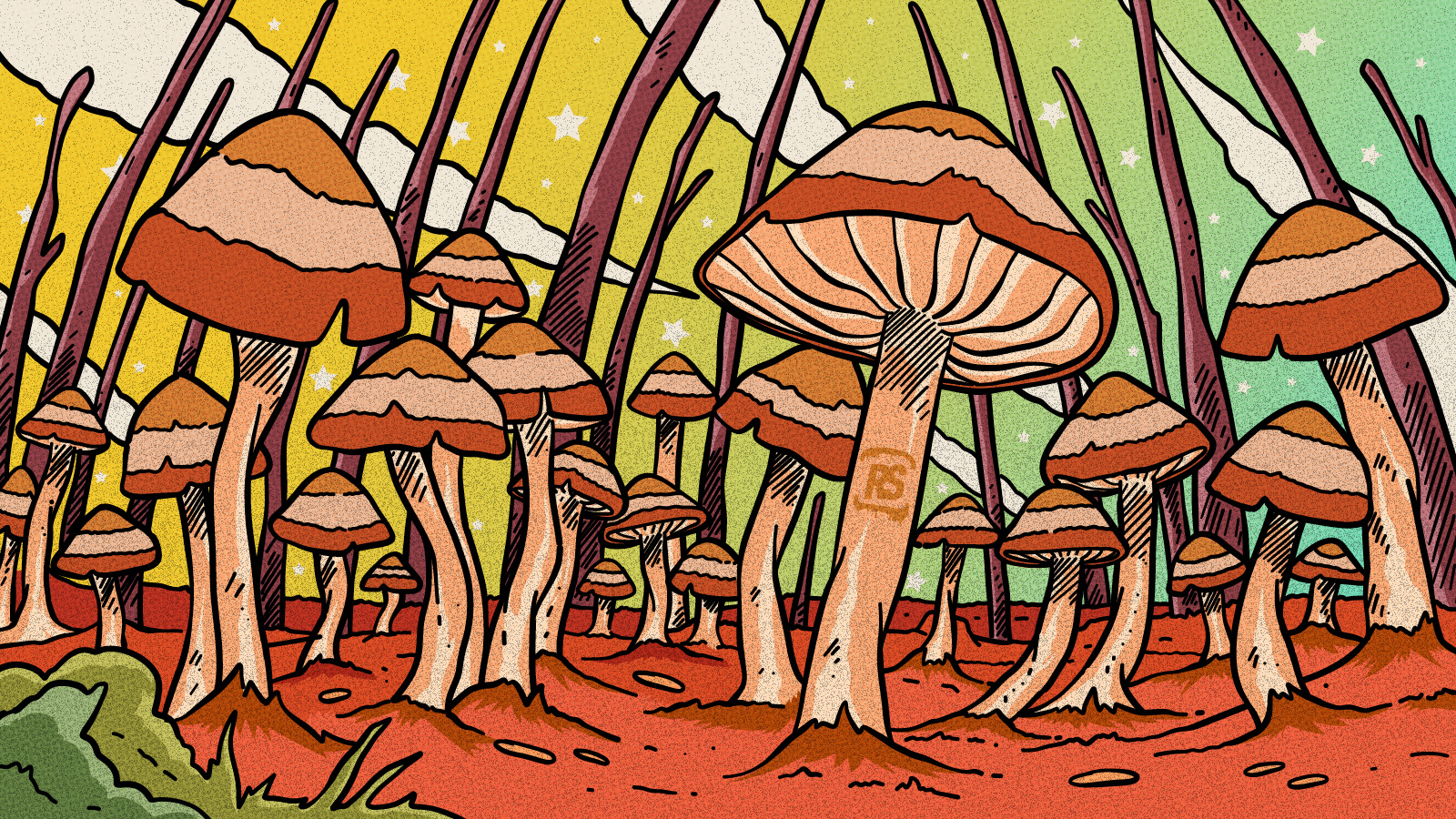Mushrooms have long enchanted humanity with their myriad colors, shapes, and, most importantly, their mind-bending properties. Panaeolus cinctulus, commonly known as the Banded Mottlegill, holds a special place among the psilocybin-containing species. This humble fungus, often overlooked due to its modest appearance, opens up a world of psychedelic exploration to those seeking to understand its essence. Cultivating and identifying Panaeolus cinctulus is not only a rewarding endeavor for the mycophile but also a step into the broader and mysterious realm of mycology.
In this article, we’ll dive into the unique characteristics and psychedelic properties of Panaeolus cinctulus, explore its dosage and potency, and learn how to identify and cultivate this remarkable mushroom. Whether you are a seasoned mycologist or a curious novice, understanding the Banded Mottlegill is a journey worth embarking on.
Panaeolus Cinctulus: The Banded Mottlegill
Panaeolus cinctulus, colloquially known as the Banded Mottlegill, is a fascinating member of the psychedelic mushroom community. It’s sought after for its psilocybin content, a psychoactive compound that induces hallucinations and altered perceptions. Yet, it’s not the only psychoactive alkaloid present; psilocin and baeocystin also contribute to its potent psychedelic effect.
Comparatively, Panaeolus cinctulus might not boast the high psilocybin concentrations found in the more famous Psilocybe cubensis. However, what it lacks in potency, it makes up for in a unique psychedelic experience that many users describe as enlightening and more cerebral.
Much like its better-known cousin, Psilocybe cubensis, the Banded Mottlegill offers a ticket to an altered state of consciousness where the mundane transforms into the mystical. Yet, each species is unique, and exploring the effects of Panaeolus cinctulus can be a different journey altogether. The alkaloid profile of P. cinctulus results in a nuanced and sometimes more introspective trip, often accompanied by a lighter body load compared to other psilocybin mushrooms.
The quest for understanding and exploring the mind often leads psychonauts to the door of Panaeolus cinctulus, unlocking a different kind of experience that broadens the horizon of psychedelic exploration.
Dosage and Potency
The journey through the realms of the mind facilitated by Panaeolus cinctulus is largely dependent on the dosage and individual sensitivity to psilocybin. It’s crucial to understand the variability in potency among different specimens and even within a single specimen to navigate a safe and rewarding experience.
Panaeolus cinctulus is often considered less potent than strains like Psilocybe cubensis. However, the effects can be profound and enlightening. A common dosage range for P. cinctulus is between 1–2.5 grams dried, though this can vary based on personal tolerance, metabolism, and the specific potency of the harvested mushrooms.
The potency of P. cinctulus can be unpredictable, as it’s influenced by numerous factors including the growing conditions and the age of the mushroom. Psilocybin, psilocin, and baeocystin concentrations can vary significantly, so starting with a lower dose is advisable, especially for those new to the Panaeolus species.
Being cautious with dosage is not just about managing the intensity of the psychedelic experience, but also about ensuring safety. Psychedelic experiences can be overwhelming, especially when venturing into the unknown with a new species of mushroom.
Before embarking on a psychedelic journey with Panaeolus cinctulus, it’s wise to do thorough research and consider consulting with experienced mycologists or psychonauts. Ensuring you have a safe set and setting and a sober trip sitter can also significantly contribute to a positive and transformative experience.

Identifying Panaeolus Cinctulus
Proper identification is paramount when it comes to foraging for psychedelic mushrooms, as misidentification can lead to dangerous, even lethal, consequences. Panaeolus cinctulus, with its subtle characteristics, may pose a challenge to the untrained eye, yet with a bit of knowledge and attention to detail, one can confidently identify this mystical fungus.
Cap
The cap of P. cinctulus is typically 1.5 to 4 cm in diameter. Initially, it’s convex with an incurved margin but flattens out with age, sometimes bearing a small umbo (a central bump). It’s usually smooth, ranging in color from cinnamon brown to dark grayish-brown, often fading to a paler tone as it matures.
Gills
The gills are adnexed (slightly attached to the stem) to free, close to crowded, and grayish in young specimens, becoming black or dark brown with maturity.
Stem
The stem is slender, measuring 7 to 12 cm long and 2 to 3 mm thick, and is often fragile. Its color is whitish to pale brown, darkening with age or when handled.
Spore Print
A distinctive characteristic of P. cinctulus is its black spore print. Spore printing is a crucial step in the identification process, as it helps differentiate it from non-psychoactive or poisonous look-alikes.
Growth Conditions and Habitat
The cultivation and foraging of Panaeolus cinctulus provide a fascinating glimpse into the adaptability and resilience of this unique mushroom species. Whether in wild habitats or controlled settings, understanding the growth conditions of P. cinctulus is essential for successful cultivation and ethical foraging.
Wild Habitats
Panaeolus cinctulus has a wide geographical distribution, found across North America, Europe, Asia, and other parts of the world. In the wild, they favor well-manured grassy areas such as pastures, meadows, and lawns. They have a particular affinity for horse manure but can also be found on other types of dung.
Controlled Settings
In a controlled setting, cultivating P. cinctulus requires a substrate rich in nutrients. A mixture of straw and manure often provides the necessary environment for these mushrooms to thrive. Maintaining a humid environment with temperatures between 55°F to 75°F (13°C to 24°C) will foster healthy growth.
Legality and Ethical Foraging
It’s crucial to note that cultivating and possessing psilocybin-containing mushrooms, including Panaeolus cinctulus, are illegal in many countries. Always ensure you are well-versed in the local laws before considering cultivation or foraging.
Ethical foraging is a must when hunting for P. cinctulus in the wild. Adhering to the principles of ‘Leave No Trace’ ensures the preservation of natural habitats and allows for the continual growth and propagation of mushroom species.
Potential Look-alikes and Safety Measures
The world of mycology is both enchanting and perilous, with many mushrooms bearing a deceptive resemblance to each other. When hunting for Panaeolus cinctulus, several look-alikes could mislead even the seasoned forager. Therefore, a rigorous identification process is crucial to avoid harmful or fatal misadventures.
Some common look-alikes include:
- Panaeolina foenisecii: At first glance, this mushroom can appear quite similar to P. cinctulus, but a crucial difference lies in the spore print. Panaeolina foenisecii has a brown spore print, as opposed to the black spore print of P. cinctulus.
- Agrocybe pediades: This species shares a similar habitat with P. cinctulus but can be differentiated by its brown spore print and lack of a ring on the stem.
- Conocybe spp.: Some Conocybe species are dangerously toxic and bear a resemblance to P. cinctulus. They usually have a more conic cap and a brown spore print.
Safety measures:
- Spore Printing: Conducting a spore print is a fundamental step in the identification process. It’s a straightforward method that can help differentiate between potentially harmful look-alikes and the sought-after P. cinctulus.
- Knowledge and Experience: Accumulating knowledge from reliable sources and gaining practical experience under the guidance of seasoned mycologists can significantly reduce the risks associated with misidentification.
- When in Doubt, Throw it Out: This age-old adage remains a cornerstone of safe foraging practices. If there’s any uncertainty regarding the identification of a mushroom, it’s better to err on the side of caution.
Identification accuracy is a life-saving skill in the world of mushroom foraging. Each venture into the wild or each attempt at cultivation should be approached with a healthy dose of respect and caution toward the fungal kingdom

How to Grow Panaeolus Cinctulus
Embarking on the journey of cultivating the Banded Mottlegill is an exploration filled with wonder, and for those looking to simplify the process, Reality Sandwich’s top 2023 mushroom grow kits come highly recommended.
Substrate Preparation
- P. cinctulus thrives on a substrate rich in nutrients. A mixture of straw and horse manure proves to be quite effective.
- Pasteurize the substrate to kill off any competing microorganisms.
- Obtain a spore syringe of P. cinctulus from a reputable source. Ensure the legality of possession and cultivation in your region before proceeding.
Initiation and Growth
- Inject the spore solution into the substrate, ensuring an even distribution.
- Place the inoculated substrate in a sterile, well-ventilated, and dark environment to allow mycelium colonization.
- Maintain a temperature range of 75°F to 80°F (24°C to 27°C) to encourage mycelium growth. It generally takes 2 to 3 weeks for complete colonization.
- Once colonization is complete, expose the substrate to fresh air, cooler temperatures, and indirect sunlight to initiate the fruiting stage.
- Maintain a high humidity level, around 95%, and ensure proper air exchange to foster healthy mushroom development.
The Final Stages
Harvest P. cinctulus just before or as the veils underneath the caps begin to tear, usually within 5 to 12 days post-fruiting conditions.
For beginners, purchasing a grow kit can significantly simplify the process. Grow kits come with pre-colonized substrate and clear instructions, providing a hassle-free cultivation experience.
The cultivation of Panaeolus cinctulus is not just a venture into growing mushrooms but an exploration of the unseen fungal kingdom. Each step of the process brings forth a deeper appreciation and understanding of the intricate world of mycology.
Blue Pearls: Sclerotia of Panaeolus Cinctulus
Sclerotia, often referred to as “truffles” or “stones,” are hardened masses of mycelium that form under certain conditions, serving as a reservoir of nutrients for the fungus. While Panaeolus cinctulus is not typically known for sclerotia production, in rare instances, under specific environmental conditions, sclerotia might develop.
The formation of sclerotia, dubbed “Blue Pearls” in the case of P. cinctulus, is a fascinating phenomenon. It’s a testament to the adaptability and resilience of fungi, and their ability to endure unfavorable conditions by diverting resources to create these nutrient-dense formations.
Last But Not Least
Embarking on the enlightening journey of exploring the Banded Mottlegill unveils a unique blend of psychedelic experiences owing to its psilocybin, psilocin, and baeocystin content. The mushroom’s potency can be variable, emphasizing the importance of starting with lower mushroom doses to ensure a safe psychedelic venture. Above all, safety remains paramount, ensuring a fulfilling and secure exploration into the mystique of Panaeolus cinctulus. Travel on, mycophiles!













